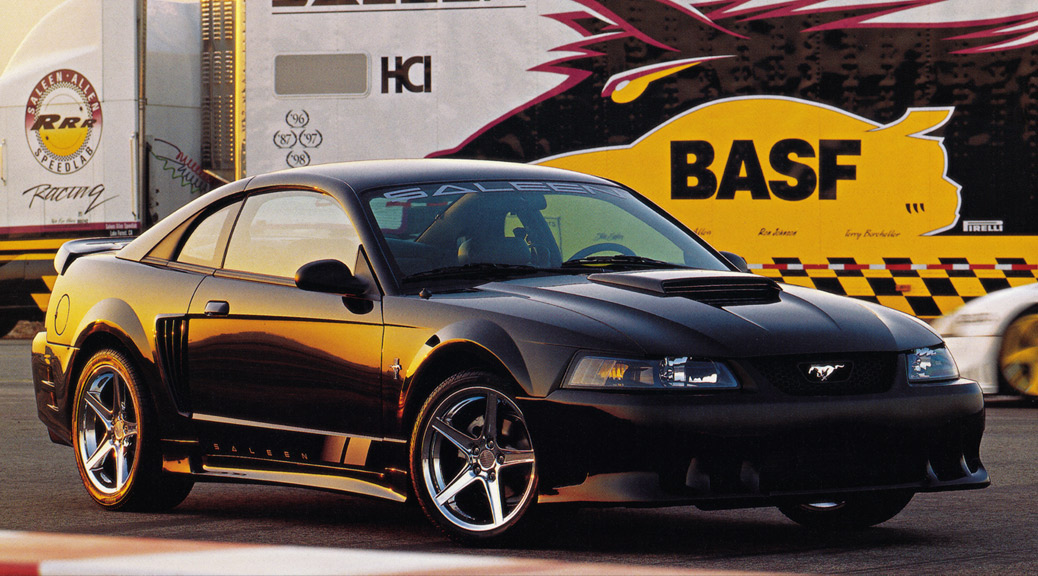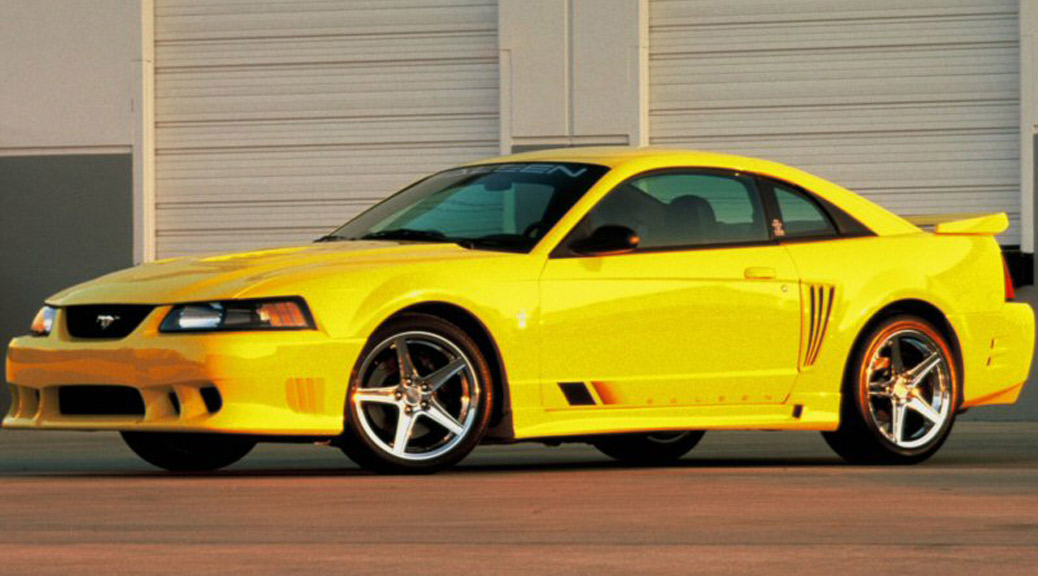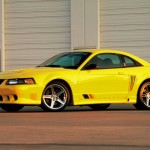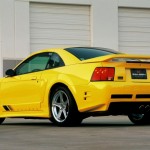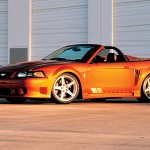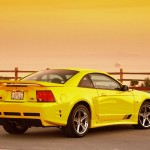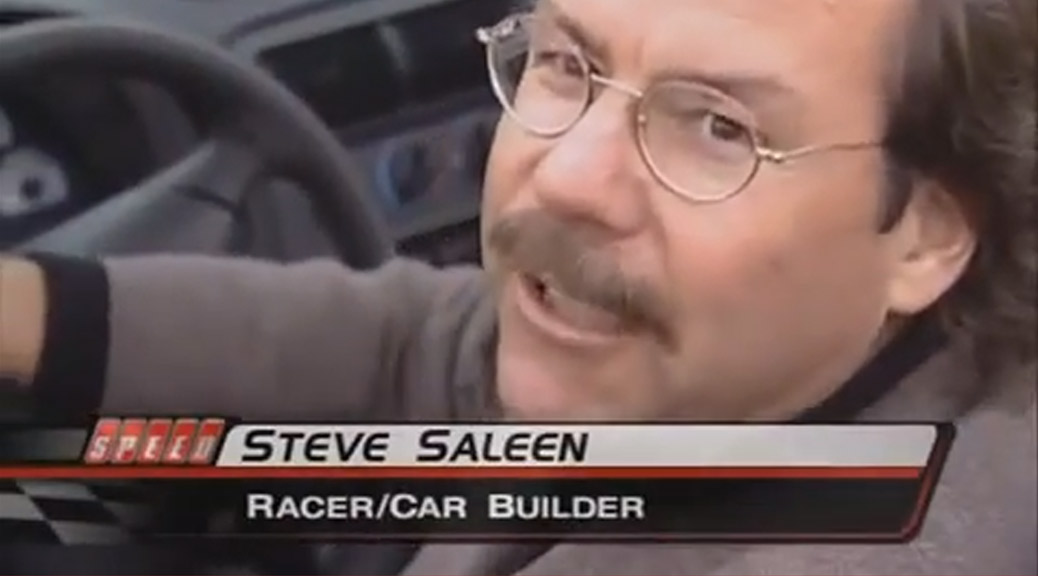By: KERMIT WHITFIELD on January 2002
Original Article: AUTOMOTIVE DESIGN & PRODUCTION, VOL. 114, ISSUE 1
STEVE SALEEN HAS TRANSFORMED THE SOUTHERN CALIFORNIA TRADITION OF CAR TUNING INTO A SCIENCE, HIS FACILITY TAKES OFF-THE-SHELF FORDS AND HONES THEM INTO PERFORMANCE VEHICLES IN A SYSTEMATIC WAY THAT OWES MORE TO THE ASSEMBLY PLANT THAN TO THE BODY SHOP.
Tucked away in a unassuming industrial park in Irvine, California in a building that could just as easily house boxes of semiconductors or disposable diapers, is the production facility/R&D center/corporate offices of Saleen, Inc., otherwise known as “pony car heaven.” Here, Ford Mustangs are disassembled, then transformed into bionic versions of their former selves.
Racing driver Steve Saleen founded the company in the early 1980s with the notion that there was a profitable market niche for customized high-performance Mustangs that wasn’t being filled by Ford. But instead of making expensive one-off machines, Saleen developed a system of mass customization that reaps many of the cost and precision benefits of mass production, without the quotidian image. Using this system the company has turned out over 8,000 vehicles, more than any other American specialty vehicle manufacturer.
The Process
The assembly line at Saleen bears little resemblance to anything found in a mass production plant; it is simply a line of cars on hand-pushed carts that are moved from station to station. But many of the operations that are performed in an assembly plant take place here. There is one big difference, though. Saleen’s assembly line is also a disassembly line: many factory parts have to be removed before the custom parts can be installed. The line has 15 stations that can produce five cars a day; it takes approximately three days for a car to cycle through the entire process. Each car receives modifications that can be broken down into two categories: those to the powertrain and running gear that enhance the car’s performance and those to the exterior appearance that make it look “fast.”
At the first station on the line the factory Mustangs are placed on a lift and stripped of their suspensions and of front and rear fascia, side skirts and side scoops. As the cars progress down the line, these parts are replaced with more aggressive Saleen counterparts. The coupes are outfitted with a seven-piece body kit that includes the aforementioned parts plus thicker C-pillars that create the optical illusion of a lower, longer, faster vehicle. These exterior parts are molded by Saleen out of urethane elastomer using a low-pressure machine. After molding, the parts are painted in Saleen’s in-house paint facility.
Currently the paint shop is located several miles away, which puts Saleen in the less-than-optimum position of having to transport painted parts to the assembly plant over the road, increasing the potential for scratches and deformations. But over the next few months the company will consolidate all of its operations in one building, which will allow it to quickly provide painted parts to the line in a low-volume version of just-in-time production.
Beyond just parts, Saleen’s paint shop has the capability of painting entire cars. The company utilizes the paint technology and expertise of longtime partner BASF to not only accurately color match Ford’s existing Mustang color palette, but to offer eight additional colors ranging from black metallic to an unusual bronze color dubbed “beryllium.” (Unlike automakers, Saleen does not dual source paint. But this is hardly surprising since in addition to its role as paint supplier BASF is also a major sponsor of Saleen’s racing efforts.)
The portion of the process that concentrates on the powertrain is quite a bit more involved than the exterior modification procedures, and unlike the exterior, it varies based on model. On the base model S281 changes are, well, basic. The engine’s electronic control module is re-programmed to squeeze out more horsepower and run on premium fuel. A less restrictive air filter is fitted, as are special underdrive pulleys and a 2 1/2-in. exhaust system. These changes represent the low-hanging fruit of increased horsepower and add 25 horses to the 260 hp on the stock version. An optional Roots-style supercharger is installed on some models, taking the horsepower count all the way up to 365.
If the car coming down the line is an upgraded S281-E (“E” stands for “extreme”), the entire engine is removed and essentially re-built in the plant’s off-line engine assembly area. This area is an enclosed space of modest size off of the main floor. It looks much more like the engine workshop of a racing team or a small R&D center than an automaker’s engine line. (And in fact, racing engines are built alongside those destined for civilians.) Here the stock Mustang engine that will become the S281-E’s powerplant is torn down to the block. It is then re-built with parts that Saleen designed based on its racing experience including: a forged steel crankshaft and rods, special camshafts, forged aluminum pistons, a whole new induction system (featuring a molded composite inlet tube which offers better airflow than aluminum and saves over four pounds in the bargain) and a high-capacity supercharger.
The reborn engine is then mated to a close ratio six-speed manual transmission and the new powertrain is reunited with the body. Describing the process, Steve Saleen says, “There isn’t any area on the engine that is not changed by us in some way.” (After years of working with Ford engines both on the factory floor and on the racetrack, Saleen has developed a close relationship with the maker and is trusted with detailed engine architecture information. This allows the company to design parts more quickly and with greater assurance that they will work well with Ford’s powerplant.)
Meanwhile, back on the line, the suspensions that were stripped in the first station are replaced with a performance-tuned setup, 18-in. Enkei wheels and Pirelli tires. Other assembly stations add touches that seem minor, but are important to the niche car buyer such as black-on-white gauges (with a speed Greeter that tops out at 200 mph) and racing-style pedals. Once complete, each car is test driven on a public road course that attempts to simulate as many different driving surfaces as possible and adjustments are made as necessary in a dedicated off-line area of the plant floor.
In addition to horsepower and handling, Saleen’s system cannily packages and sells exclusivity at a cut-rate price. Each car that rolls out of the Irvine facility is numbered, registered and treated like a collector’s item from day one. Saleen tracks ownership of its vehicles and can provide build and technical information to potential buyers of used models. The result is products that often increase in value and sell for more on the used car market than they did originally.
As for the stock parts that are the flotsam and jetsam of Saleen’s production system, the company has adjusted its approach over time to that potential source of waste. In the 1980s it ordered its Mustangs stripped to the bone, partly in order to reduce the number of factory parts it would have to get rid of. But this proved to be a burden on Ford and no real bargain for Saleen. So, it changed its strategy, began ordering fully-equipped models and identified buyers for the replaced parts. Today, practically every part is sold not scrapped.
Faster and Hipper
Steve Saleen sees his operations as a model for what can be achieved in the niche vehicle arena by a small agile company. He says bluntly that his company is “able to service the enthusiast market more quickly and accurately” than a behemoth like Ford. When he compares his business to that of Ford’s Special Vehicle Team (SVT), which Saleen preceded and influenced, he draws the analogy of the relationship between ESPN and ESPN2. If SVT’s Cobras are the equivalent of major league basketball, Saleen’s Mustangs are the edgier, younger “X Games.”
The company projects the market for its high-performance products to increase in the future, especially now that GM has axed its pony cars. Don Cuzzocrea, Saleen’s chief operating officer, says, “There is a lot more interest in these types of vehicles because the mainstream cars are becoming more and more homogenized. The Camaros and Firebirds you could order from GM were a little edgier than the Mustangs you can get from Ford, so we think we will pick up a lot of those customers.”
Interest outside of the pony car crowd seems to be growing as well. Steve Saleen says that at the recent Specialty Equipment Market Association (SEMA) show in Las Vegas he was approached by representatives from several Ford divisions that were interested in utilizing his company’s unique services. Perhaps suped-up Volvos and Jaguars will someday make their way down the line in Irvine.

